Textiles through History: The Definitive Guide for Travellers
Weaving textiles throughout history and the advancement of society Fabric and textiles industry has a long and coloured past. While it is estimated that fabrics were used in the time of the Stone Age, nearly…
4 Mar 19 · 8 mins read
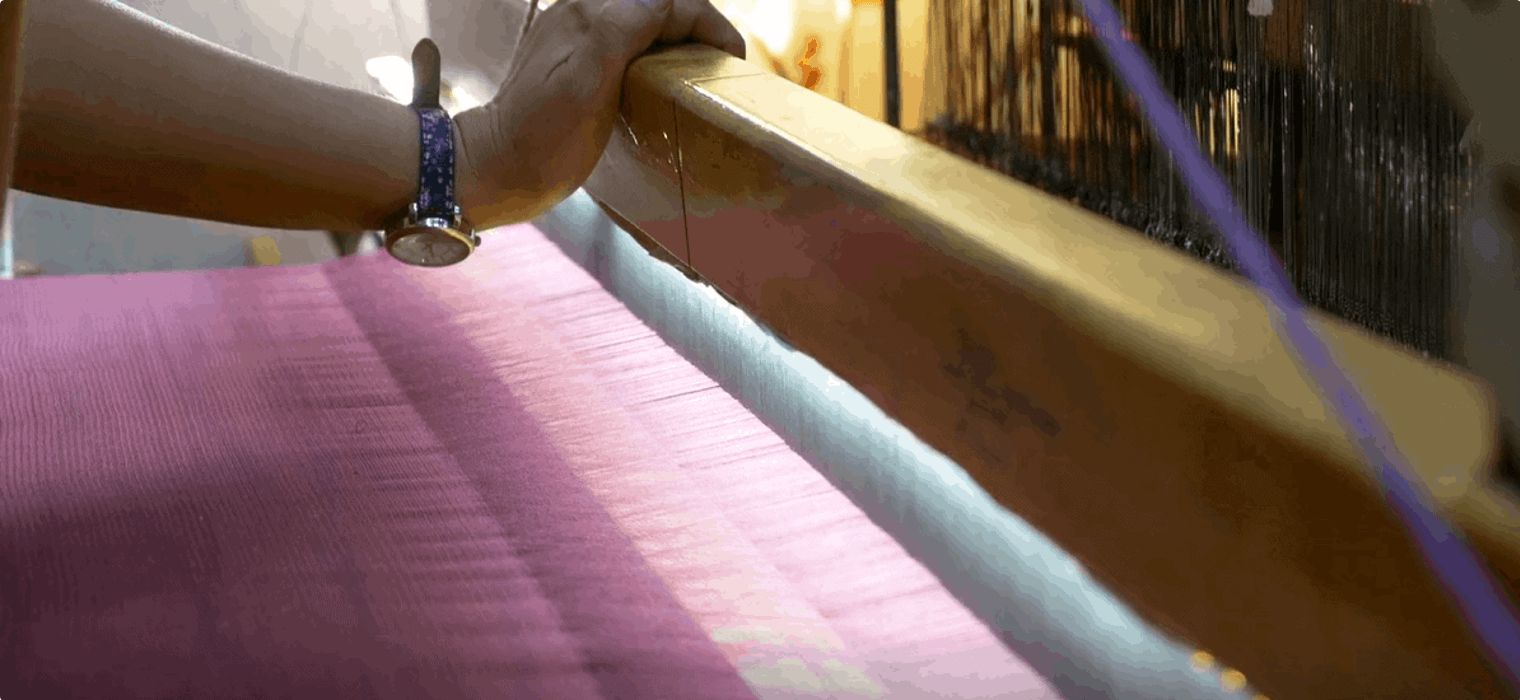
Weaving textiles throughout history and the advancement of society
Fabric and textiles industry has a long and coloured past. While it is estimated that fabrics were used in the time of the Stone Age, nearly 100,000 years ago, evidence has only recently been discovered to confirm, with a large degree of certainty, that plant fibres were used to make clothing 34,500 years back, as indicated by Kassia St Clair in The Golden Thread (2018, p. 21). Evolution led to a reduction of hair on human bodies and thereby necessity arose for alternative methods to protect us from the elements. Neanderthals flung animal pelts over their bodies to keep themselves warm, until early humans decided to more methodically fasten the pelts for a better fit to their bodies, which led them to explore new sources of warmth including plant-based fibres, and eventually modern synthetic fibres. Read more about Ancient Fibres and the History of Clothing here.
But beyond this necessity of protection for human survival, the evolution of fabric production played an important role in advancing human society and culture influencing a number of technological innovations, language use, and societal norms. Nearly all of human history can be woven together with the textile industry. Modern computers, trade, banking, art, and fairy tales are just a few examples of the influence of this important industry. This article will lay the foundations of the importance of textiles as well as how fabric has created the rich tapestry that is human history through myth, trade and storytelling.

Technology Thanks to Fabrics
Being able to create fabric products was one of the earliest forms of technology innovation. When better protective clothing and baskets were created, humans were better able to harvest new resources and migrate to different corners of the globe. Through this migration, greater diversity in fibre sources, from the traditional flax seed materials to linen in Egypt, cotton in India, and silk in China, were all able to be exchanged between them.
Traditionally, a skilled few hand-twirled raw materials into usable yarn and then hand-wove them into fabrics. After time, spindles and distaffs improved processes by gathering the raw and spun materials and avoiding knotting. But considerable advances began to shift the skills needed as well as the demographic of the textile workers. One of the earliest innovations to the textile industry was the heddle loom, from Egypt 2000 BC (St Clair 2018 p. 6), which allowed for greater efficiency and uniformity when weaving due to the even placement of the warps (length-wise base threads) that were held still while the weft (width-wise weaving thread) was passed between them.

Later, the Jacquard Loom launched the industry as a precedent for modern technology. In 1801, Joseph Marie Jacquard advanced the loom using interchangeable holed cards that dictated a woven pattern. This meant that the machine could dictate patterns and designs on its own, without the need for a skilled worker and creating a identical textiles. These punch cards proved incremental to the advances of computer programming and data storage. Charles Babbage, the “great ancestral figure of computing”, so-called by his biographer Anthony Hyman (cited by Edwards Park 1996), took inspiration from Jacquard’s loom system for his Analytical Engine. In the 1830s, Babbage adapted the punched-card system to inform the computer’s ability to complete arithmetic equations and store the numbers. While never complete, Babbage’s conception of punch card systems to be used in mechanical calculations paved the way for Herman Hollerith, founder of the Tabulating Machine Company what would later merge to become IBM, to adapt the technology in order to calculate the 1880 US Census results, an invention that saved the US government 4 years of time and $5 million dollars (Zimmermann 2017). Advances to technology skyrocketed throughout the 1900s based on the work of Jacquard, Babbage and Hollerith and resulting in the the modern ‘smart’ technology of the modern era.

Due to its prominence as a continually expanding and wealthy industry, competition never ceased to develop new ways of making production faster and cheaper. The textile industry and the demand for efficiency in weaving had a number of positive results for society as a whole in terms of technology.
The Textile Trade
The fabric industry itself out-dates most other industries including pottery, metallurgy and even agriculture. Trade of fabrics was inspired by the varying resources across the globe, and trade routes regularly toted textiles. The Silk Road trading routes dating to 1st century AD, were important connections between the Han Dynasty in China and business in Europe and Africa. While not only carrying silk, traders exported the monopolised Chinese fabric to a variety of countries as a luxurious piece of material for the wealthy. To read more about its establishment and history, check out our article The History and Legacy of the Silk Road.
Throughout history the textile and fashion industries have been widely profitable. The British Empire specialised in wool and the Mughal Empire distributed brightly-decorated textiles. Wherever the the fabrics industry led, vast wealth followed, and with it secondary jobs. For example, first cases of bookkeeping and crediting were established during increased textiles trade (St Clair 2018, p. 8). Moreover, banking was also a prominent result of the wealth from textiles trade. According to St Clair, the Medici family, who were originally in the business of producing wool, placed their resulting wealth into banking and became the biggest bankers of the 15th century. The Medici family’s bank went on to fund a number of high-profile art projects such as Michaelangelo’s David, Brunelleschi’s Basilica di San Lorenzo, and da Vinci’s Mona Lisa (2018, p. 8). Consequently, the Italian Renaissance art period can largely be attributed to the textiles industry.

The beginnings of the textile trade industry had two segments, the more plain everyday materials, such as cotton and wool, of the common people, and the finer materials, such as linen and silk, of the aristocrats. It wasn’t until the 14th century when the fashion industry advanced for these two groups to intertwine. Innovation to dyes and tailoring, sparked new intrigue for lower and middle class citizens to dress in style with different patterns and fabrics. Prior to the 19th century when western chemical dyes were created, India had championed the creation and use of blue dye for textiles for thousands of years. In fact, the Victoria and Albert Museum’s The Fabric of India exhibit suggests that the word indigo, of Greek origin, relates directly to the name India itself. Trade has always been an essential part for the exchange of human ideas and innovation and the textiles industry is no exception.

Textile Evidence in Mythology and Fairytales
If the importance of textiles and fabric-making were not evident enough in the telling of human history, its importance has also been further immortalised in countless myths and stories that have been recounted throughout centuries and in the everyday use of the English language.
In many different ancient civilizations and countries mythology has indicated the importance of fabrics and the weaving profession. Perhaps one of the more better known examples is the Greek Moirai, or the Fates, whose work as godly weavers is to string together mortal beings’ life path and can be exemplified in Disney’s Hercules. Mythology surrounding a number of goddesses and patron saints loop in the idea of weaving, including pre-Dynastic Egypt’s Neith, Greece’s Athena, Japan’s Amaterasu and China’s weaver girl (St Clair 2018, p. 12).

Not only are some myths and fairytales centered on the lives of textile workers, but many others use symbolism to demonstrate the skill and near-mystic talent of the industry. For example, in the Hans Christian Anderson’s Emperor’s New Clothes, the arrogant Emperor is embarrassed by two tailors claiming to possess special invisible fabric. A strong number of examples come from the Grimm Brothers. For example, in the Grimm Brother’s The Three Spinning Women, the lazy lead character is rescued by three spinners who help her to spin a room full of flax in order to marry the king. Other weave-related Grimm Brothers’ tales include the likes of Rumplestiltskin, The Brave Little Tailor, The Spindle, Shuttle and Needle, and the Disney-adapted Sleeping Beauty, among many others.

The Grimm family lived in the Schwalm River Valley, Germany, an area rich with connection to textiles and clothing in general, especially to a red cap traditionally worn by young local girls, from which came the inspiration for the Grimms’ famous Little Red Ridinghood. It is not surprising that the importance of the textile industry in the area is enlaced into their folklore and fairytales. The Grimm Brothers collected their stories from a variety of sources including verbal accounts from locals. The act of weaving or sewing lends itself well to telling stories, as groups of weavers were set up in close proximity and continually repeating tasks (St Clair 2018, p. 11). As they worked, it is very likely that they also fabricated tales to make their time more enjoyable. This is also the likely reason that weavers in the narratives are spun as the heros with magic talents and superior weaving skill.
A Lasting Tradition of Textiles in Language
The tradition of weaving and the English language are closely knit as well. As St Clair indicates, the earliest forms of paper were, in fact, leftover fabrics scraps (2018, p.17). Additionally, book covers were made of textiles and bookmakers used needle and thread to bind them. The written word and textiles are intricately tied and to this day live on. In addition to words such as unravel, text, fabricate, and piece together, metaphors such as cut from the same cloth, needle in a haystack, and spin a yarn, among others, are still exceedingly common in everyday language.
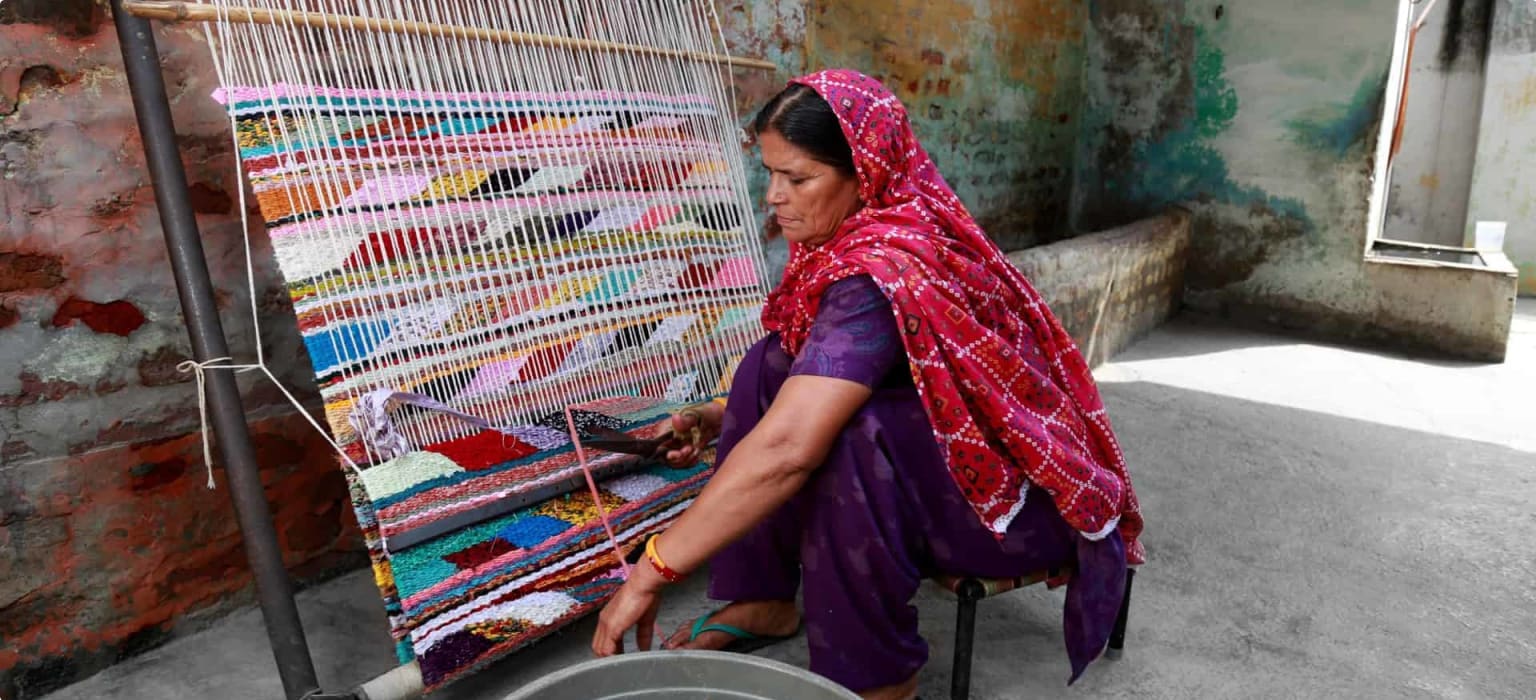
A Female-dominated Industry
Women have ruled the realm of weaving, sewing and other fabric-related works since the earliest forms of the industry. Even in the aforementioned mythology associated with weaving, the characters are most commonly in female form. According to St Clair, this is because weaving and needlework were easily performed while also minding children and completing wifely duties (2018, p. 13). In other words, a skilled weaver would find her the work second nature, allowing her mind to be distracted by the children as she works and taking breaks as need to attend to them without worrying about where she left off. This was often seen as a secondary, less important, income for many families throughout history. Yet, women’s contribution to the economy through textiles has been and continues to be remarkable. For example, clothing production in Bangledesh makes up a large proportion of the country’s exports: an estimated 80 percent in 2014, and nearly 80 percent of workers in the industry fashioning these clothes are women (St Clair 2018, 16-17).

You would be hard pressed to find an area of the world left untouched by the influence of the textiles industry. Whether by technology, language, or social ties, it is easy to see the effects of textiles in every travel location. From a trip along the Silk Road through Asia and any market stops along the way, to a drive on ‘Fairytale Road’ in Germany, where the Grimm brothers took inspiration and left their mark, and anywhere in between, the textiles industry is intricately interwoven between time and space.
Reference Text
St Clair, Kassia. The Golden Thread: How Fabric Changed History, John Murray (Publishers): London, 2018.
Odyssey Traveller

Odyssey Traveller is committed to charitable activities that support the environment and cultural development of Australian and New Zealand communities. We specialise in educational small group tours for seniors, typically groups between six to 15 people from Australia, New Zealand, USA, Canada and Britain. Odyssey has been offering this style of adventure and educational programs since 1983.
We are also pleased to announce that since 2012, Odyssey has been awarding $10,000 Equity & Merit Cash Scholarships each year. We award scholarships on the basis of academic performance and demonstrated financial need. We award at least one scholarship per year. We’re supported through our educational travel programs, and your participation helps Odyssey achieve its goals.
For more information on Odyssey Traveller and our educational small group tours, visit our website. Alternatively, please call or send an email. We’d love to hear from you!
Related Articles
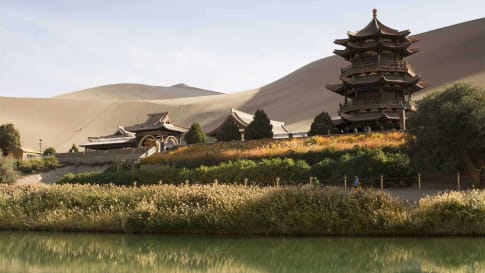
History and Legacy of the Silk Road route
The Legacy of the Silk road is outlined in this short definitive article for mature age travellers planning to take a small group tour along through these 3 countries over 29 days. The program is designed for mature couples and solo travellers.
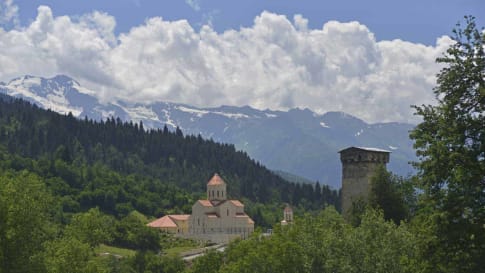
Clothes began in Georgia | History of clothing
For small group tour of mature and senior travellers touring Europe, this article provides an insight into the origin of textiles and fabric from Georgia in the Caucasus, to the Roman Empire and Southern Italy and Rome through to the industrial revolution of Britain.
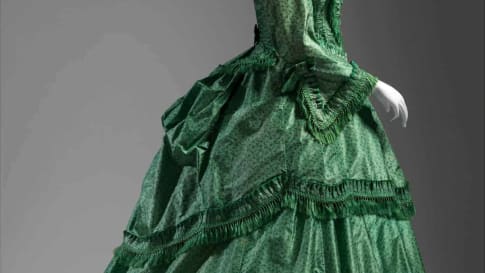
Victorian Women's Fashion: The Definitive Guide for Travellers
Article about Fashion including fabric and colour from Queen Victoria's. A period of personalities and progress change via the industrial revolution is examined for the senior couple and solo traveller seeking to learn more on a small group tour.
Related Tours
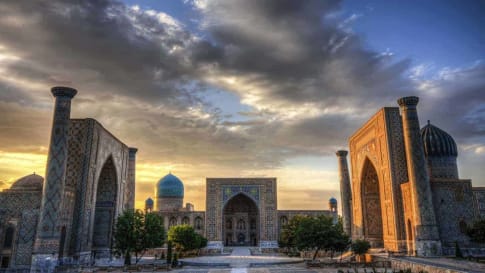
29 days
Aug, May, SepTravel on the Silk Road with Odyssey Traveller | Small Group Tour for Seniors
Visiting China, Kyrgyzstan
The Silk Road is an ancient trade route linking China and Imperial Rome through Central Asia. Few areas in the world remain as unexplored or offer such richness in terms of ancient and modern history, culture, and scenic diversity as Central Asia. Our Small group Silk road tours itinerary explores the Road through remote deserts and mountainous environments as we visit key sites between Xi'an and Bukhara.
From A$18,750 AUD
View Tour
23 days
Oct, Apr, SepCanals and Railways in the Industrial Revolution Tour | Tours for Seniors in Britain
Visiting England, Scotland
A small group tour of Wales, Scotland & England that traces the history of the journey that is the Industrial revolution. Knowledgeable local guides and your tour leader share their history with you on this escorted tour including Glasgow, London, New Lanark & Manchester, Liverpool and the Lake district.
From A$17,860 AUD
View Tour
21 days
Sep, JunQueen Victoria's Great Britain: a small group tour
Visiting England, Scotland
A small group tour of England that explores the history of Victorian Britain. This escorted tour spends time knowledgeable local guides with travellers in key destinations in England and Scotland that shaped the British isles in this period including a collection of UNESCO world heritage locations.
From A$15,880 AUD
View Tour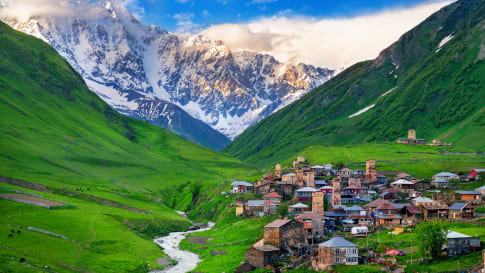
22 days
May, OctSmall Group Tour to the Caucasus | Armenia Azerbaijan Georgia
Visiting Armenia, Azerbaijan
This small group program is designed to give people an opportunity to explore Tbilisi, Baku, Yerevan as well as important monuments, historical and religious sites, diverse landscapes and ancient architecture by visiting the Caucasus Mountains and the lowlands of Armenia, Georgia and Azerbaijan. Led by local English speaking guides, there will be the opportunity to meet local people.
From A$11,835 AUD
View Tour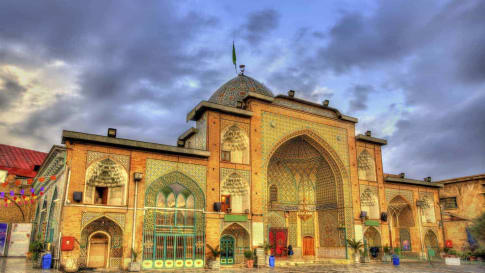
17 days
Sep, Nov, AprIran Culture and History Escorted Small Group Tour for seniors
Visiting Iran
Unlike its neighbours to the west and northwest, Iran had not adopted Christianity and it was the explosive spread of Islam and its ready adoption, without the Arabic language or customs, which helped unite the culture and greatly enrich Persian heritage. This small group tour program includes the great cities of Iran, historic sites, mosques, gardens, bazaars and teahouses for couples and solo travellers.
From A$11,825 AUD
View Tour

